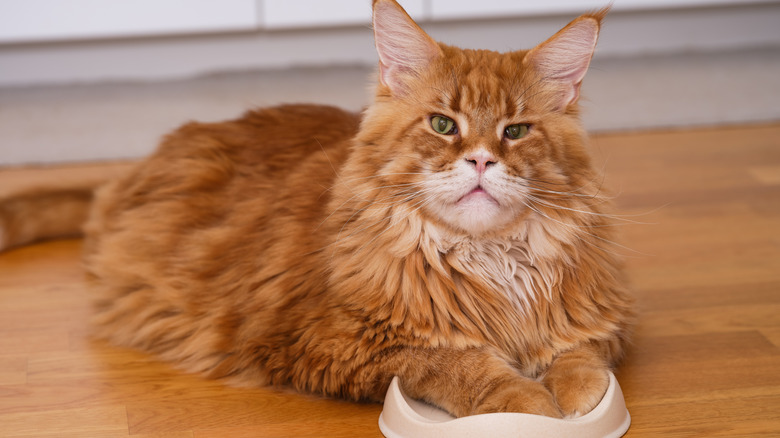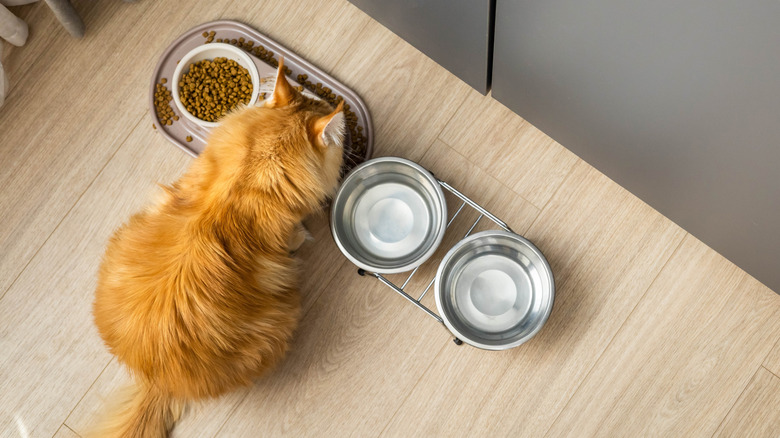What It Means When Your Cat Scratches The Floor After A Meal
Scratching sounds are coming from the kitchen, but the litter box isn't in there. Instead, you notice your cat attempting to bury their food, gently pawing at the floor around their bowl. You may see them engaging in this behavior for a number of reasons during or after a meal. Cats might scratch around the bowl if they don't like their food, feel a bit on edge, or want to save the leftovers for later.
Keeping your cat's food dish in a busy location can trigger scratching behavior. Stress from other pets and people in the area can cause your feline's food-hiding instincts to kick in. As a result, they could be trying to conceal the food's smell to keep others from eating it. Moving their bowl somewhere quieter may help your kitty relax and enjoy their meal.
Alternatively, your feline may not like their food. Cats are drawn to meals by scent, and a poor smelling (to them) kibble may make them want to bury it. In addition, some health concerns, such as whisker fatigue, may make it difficult for your kitty to eat. Some professionals believe whisker fatigue occurs when a cat's whiskers touch the sides of a bowl too often. As a result, they may tip over the bowl to dine, and then paw at the food to "clean" up. Other physical ailments, like dental diseases, may make eating painful. If your cat seems to wince or flinch before scratching at their bowl or the floor, a trip to the vet is a good idea.
How to keep your cat's food area enjoyable
You can take a few additional steps to ensure your cat feels comfortable while eating. Clean their bowl regularly, place it away from litter boxes, and reduce any stressors. It's also important not to punish your cat for scratching the floor after a meal, as this is a normal, natural behavior.
While you should clean your cat's bowl after every food session, it's also a good idea to toss it into the dishwasher each time you run a load. Further, using pet-safe cleaning products can keep the area tidy. Certain dishes, such as the best cat water fountains and low, heavy bowls, are less likely to tip over. They can also help reduce whisker fatigue, making your cat less likely to want to paw at the area. Additionally, utilizing placemats under food dishes can help contain messes.
Other issues, such as problems with the food or proximity to things like the litter box, may cause your cat to paw at their food dishes. Check that the food is fresh and doesn't contain any ingredients your cat may be allergic to. You also want to place your cat's food and water as far from the litter box as possible.

